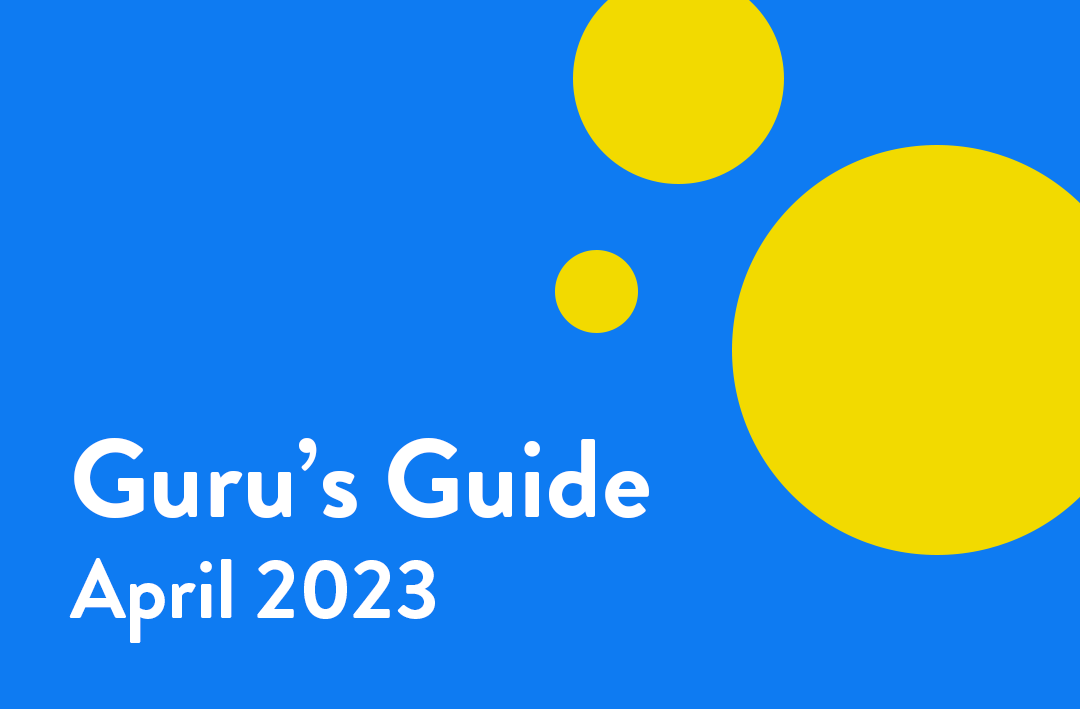Guru’s Guide April


Google to Release AI-Powered Search Tool – Mike Lee
The Google Search landscape is rumored to have significant changes on the horizon as a response to the challenges posed by Bing & ChatGPT.
‘Project Magi’ is rumored to be a more sophisticated version of Alexa. Users can learn on the fly, as they’re asking questions, not just from how they’ve conversed in the past. This is a significant change – but one of the more considerable changes is how it will help Google facilitate transactions. This update will allow users to buy products they’re searching for without having to leave the platform.
The update will have implications for business owners and marketers on how they may need to adapt to the ‘Project Magi’ interface. For example, when Google is looking for products to display on Magi, business owners must ask themselves: “How can I optimize my site so my products can be served in search results to be purchased?”. It’s also estimated that Google Magi will mean 25-30% less real estate on SERPS, which further enforces a ‘winner takes all’ environment, meaning the top 3 results will be more critical than ever.
Ultimately, marketers will need to keep a close eye on the update upon launch to assess all the variables and possibilities to enhance their presence in search (and of course, we’ll keep you updated on this!)
Rewriting The Script – Jamie Swanton
Are you familiar with Google Ads scripts?
If not, don’t worry; you’re not alone. Simply put, a script is a piece of code that can instruct Google Ads to perform various tasks in the background to support campaign growth. They can export reports, automate tasks, and even enable ads for products in real-time – like promoting suncream when the sun’s out!
Over the past few months, we’ve been working hard to level up our library of scripts, particularly in the backend of Performance Max campaigns.
The result has been an extra layer of digital wizardry in many of our client’s campaigns, improving visibility, efficiency, and performance. We’re talking an additional $25,000 in revenue for one client alone just by surfacing forgotten products from Google’s algorithms!
Unlock New Opportunities: Leveraging Meta Instant Forms for Lead Generation on Social Platforms – Sophie Chugg
Meta Instant Forms is a lead generation strategy that captures prospect information from web forms embedded in social media posts or ads. These forms are highly customizable and allow you to segment your audience into actionable groups that are more likely to convert. The strategy helps maximize ROI, build relationships with potential customers over time, and unlock new opportunities in lead generation on social media platforms.
To generate quality leads using Instant Forms, we need to clarify the purpose of contact and highlight the sign-up benefits, manage customer expectations regarding follow-up, select targeted, pre-filled questions, avoid requesting unnecessary information, and utilize lead filtering.
Used in conjunction with a funneled approach, lead generation is an essential service offering for lead gen and e-Commerce clients.
Designing the Future: Navigating UX in the Web3 Era – Irina Dubrovina
The evolution of the internet is transitioning from Web2 to Web3, and with this shift comes a demand for skilled UX/UI designers. While the Web3 space may seem patchy and complex, it is undoubtedly a part of our future, and designers are facing new tasks and challenges in this emerging landscape.
One of the critical challenges for Web3 designers is ensuring a smooth entry for new users to Web3 products. As Web3 introduces decentralized technologies and blockchain-based systems, designers must create user-friendly interfaces that simplify the onboarding process and make it accessible to a broader audience. This may involve designing intuitive and informative tutorials, straightforward navigation, and seamless interactions that guide users through the complexities of Web3 applications.
Web3 designers must create visually appealing interfaces that capture users’ attention and provide an enticing experience. Explosive UI, characterized by dynamic animations, unique visual elements, and engaging interactions, has become a prerequisite for Web3 products to stand out in the competitive landscape.
As Web3 continues to shape the future of the internet, skilled designers who can adapt and meet these challenges will play a crucial role in shaping the success of Web3 products and services.
If this concept interests you, here are some examples of Web3 websites that exist today.


